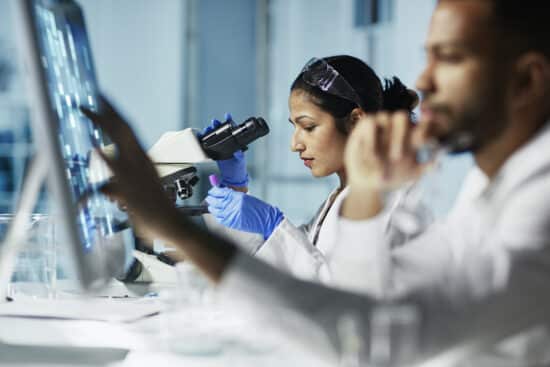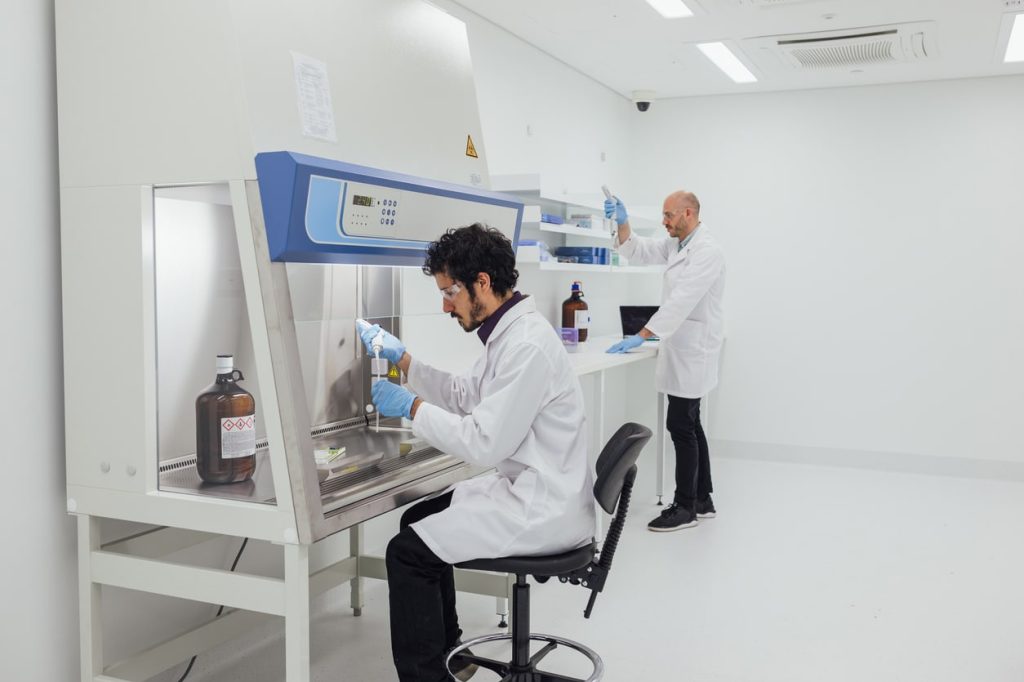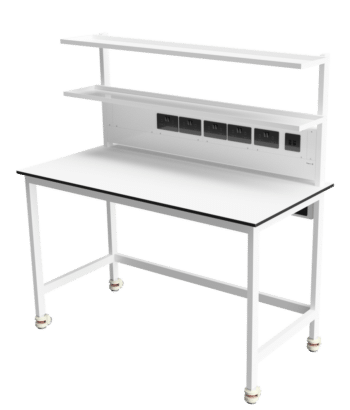It’s important that any workplace is designed with its staff in mind, making sure that the environment is a comfortable and productive one. However, when it comes to laboratories, this sentiment is even more significant. After all, working with potentially hazardous materials as well as carrying out delicate tasks requires a well-thought out design and layout.
With that in mind, in this guide we’ll look at ergonomics in a laboratory environment, why it’s important and the impact it can have.
What is ergonomics?
So, what does ergonomics mean and why is it something you should be aware of? Ergonomics is the science of designing a workplace to the user’s needs, with the focus being to help improve efficiency and productivity, while also considering things like reducing discomfort in the workplace.
Ergonomics is commonly used in the context of office environments, such as the height of the desk or chair, the angle of computer monitor and the lighting. However, this can apply to almost any workplace environment. In particular, for laboratories, ergonomics can also include taking into account the need to move around the workplace and how to do this efficiently and comfortably.
Improving the ergonomics of your laboratory means that your staff are able to complete their tasks with ease, avoiding any ergonomic injuries in the process.

Why should you consider ergonomics in your laboratory?
Laboratory ergonomics refers to the practice of adapting the lab environment to the user’s requirements. Many tasks performed in laboratories can put workers at risk of injuries such as repetitive strain injury, and back or neck pain. What’s more, each laboratory will face its own challenges based on the existing seating, lighting, equipment and the people themselves.
You should carry out an assessment of the current ergonomics of your laboratory and decide whether things need to change in order to improve work output and worker comfort. This can include:
- Tasks – are they repetitive, or do they require a lot of moving around or awkward postures such as bending down or reaching up?
- Users – consider the heights and builds of your staff and whether anyone has any special requirements
- Equipment – is the current equipment and lighting suitable for the tasks, and is there plenty of space? Are the chairs supportive, and do people know how to use everything safely?
Once you’ve better understood your laboratory space, you may begin to identify hazards and risks and understand how to better manage the work area. There may be a slightly different layout or piece of equipment that can make a big difference to everyday life in your laboratory.

What benefits can ergonomics have in the lab?
Successful implementation of ergonomics in a laboratory environment can have a number of benefits, particularly when you show continuous commitment to making improvements. The advantages of paying attention to ergonomics can include better physical and mental health, as well as higher output of quality work.
- Physical health benefits – those who work in ergonomic workplaces can benefit from improved overall health, in particular the cardiovascular system. What’s more, ergonomics can reduce work-related injuries that are typically caused by strains or fatigue. Staff may also benefit from less tension in their joints, thanks to workstations that fit their build and height, as well as better blood flow from not having to move in awkward ways.
- Mental health benefits – in turn, reducing any physical discomfort can have an impact on improving mental health too. With a workplace that makes it easier to complete tasks and get the job done more comfortably, you can reduce stress levels and help to engage staff more effectively.
- Improve productivity – ergonomics can have a direct impact on productivity, creating workstations that are much easier to work with. Whether it’s better organised equipment and supplies to improving monitors and desk set-ups, the more comfortable your staff are, the more likely they are to get through their tasks.
- Eliminating distractions – ergonomics can also help in creating the right lighting and ventilation, providing the right environment that has minimal distraction from the job at hand.
So, by considering ergonomics in your laboratory, you could make a big difference to your staff’s day-to-day operations and how they are able to carry out their tasks. Find out more about how InterFocus can help you to achieve a more ergonomic laboratory with our laboratory refurbishment and fit-out services.




